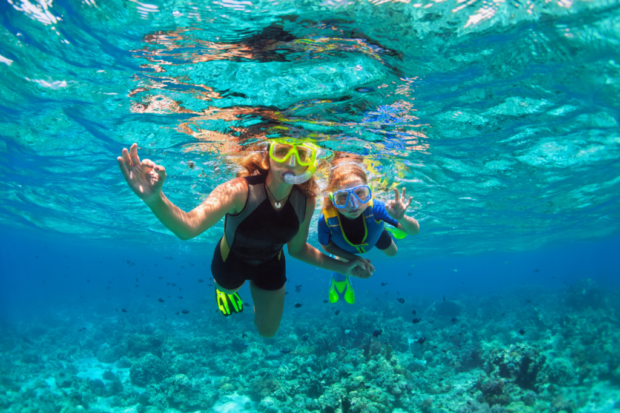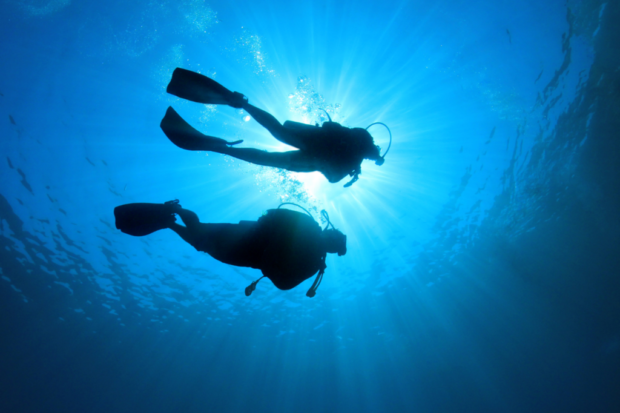Snorkeling vs Scuba Diving: Key Differences You Need to Know
Choosing between snorkeling and scuba diving can be challenging for underwater adventure seekers. Both activities offer unique ways to explore marine ecosystems, but they differ significantly in equipment, training, and experience. Whether you’re planning a trip to the crystal-clear waters of Bali or simply curious about underwater exploration, understanding these differences will help you make the right choice for your next aquatic adventure.

What’s the Key Difference Between Snorkeling and Scuba Diving
The fundamental difference between snorkeling and scuba diving lies in how you breathe underwater. Snorkeling involves swimming at or near the water’s surface while breathing through a tube called a snorkel. You remain connected to the air above water, limiting your exploration to what you can see from the surface.
Scuba diving, on the other hand, allows complete immersion underwater using a Self-Contained Underwater Breathing Apparatus (SCUBA). With compressed air tanks and regulators, scuba divers can explore deeper waters for extended periods, experiencing marine environments that snorkelers can only glimpse from above.
Snorkeling vs Scuba Diving: Meaning
What is Snorkeling
Snorkeling is a surface water activity where you swim with a mask covering your eyes and nose, and a breathing tube (snorkel) that extends above the water. This simple setup allows you to float face-down on the water’s surface while breathing normally, observing the underwater world below without having to lift your head to breathe.
The beauty of snorkeling lies in its simplicity and accessibility. Almost anyone who can swim can snorkel with minimal instruction. It’s perfect for exploring shallow reefs, watching tropical fish, and enjoying the underwater scenery without complex equipment or training.
What is Scuba Diving
Scuba diving involves using a self-contained underwater breathing apparatus (hence the acronym SCUBA) that allows divers to breathe underwater for extended periods. This sophisticated system includes compressed air tanks, regulators to control airflow, buoyancy control devices (BCDs), and various instruments to monitor depth, time, and air supply.
Unlike snorkeling, scuba diving requires proper certification through organizations like PADI or SSI. Many enthusiasts pursue their training through an IDC in Bali, where world-class diving conditions provide an ideal learning environment. Scuba diving opens up an entirely new world of exploration, allowing you to swim alongside marine life in their natural habitat.
Snorkeling vs Scuba Diving: Suit
The equipment and attire for snorkeling and scuba diving differ significantly based on their respective requirements:
Snorkeling Equipment:
- Mask: Covers eyes and nose for underwater vision
- Snorkel: Breathing tube that extends above water
- Fins: Optional but helpful for propulsion
- Rash guard or swimwear: For sun protection
- Wetsuit: Only in cooler waters
Scuba Diving Equipment:
- Mask: Similar to snorkeling but designed for pressure
- Buoyancy Control Device (BCD): Controls buoyancy
- Regulator: Delivers air from tank
- Air tank: Contains compressed air
- Wetsuit or drysuit: For thermal protection
- Dive computer: Monitors depth and time
- Weight system: Helps maintain buoyancy
The complexity of scuba equipment reflects the more technical nature of the activity. While snorkelers can often get by with minimal gear in warm waters, scuba divers must always use complete equipment systems for safety. This difference in equipment also contributes to the significant cost difference between the two activities.
Snorkeling vs Scuba Diving: Maximum Depth
How Deep is Snorkeling
Snorkeling typically keeps you at the water’s surface or within 1-2 meters of it. The length of your snorkel tube limits how deep you can go while still breathing through it. Some experienced snorkelers practice free diving, briefly holding their breath to dive deeper (5-10 meters) for a closer look at marine features, but this requires additional skills and comfort in the water.
The depth limitation of snorkeling means you’ll enjoy a bird’s-eye view of underwater landscapes rather than an immersive experience. This works perfectly in locations with shallow reefs and clear water, like many spots around Nusa Lembongan, where vibrant coral gardens are visible from the surface.
How Deep is Scuba Diving
Scuba diving opens up a three-dimensional underwater world with significantly greater depth ranges. Recreational scuba diving typically ranges from 5 to 40 meters, depending on your certification level:
- Open Water certification: Usually limited to 18-20 meters
- Advanced Open Water: Extends to about 30 meters
- Deep Diver specialty: Allows exploration to 40 meters
- Technical diving: Can exceed recreational limits with specialized training
With greater depth comes greater responsibility. Diving deeper requires understanding concepts like nitrogen absorption, decompression limits, and proper ascent techniques. This is why proper training through reputable programs is essential for safe diving experiences.
Snorkeling vs Scuba Diving: Course and Certification

Snorkeling Training
- No formal certification required
- Basic instruction takes minutes
- Simple techniques easily learned
- Minimal safety protocols to remember
- Can be self-taught (though guidance is recommended)
Scuba Diving Certification
- Formal certification mandatory
- Courses typically take 3-5 days
- Includes theory, pool sessions, and open water dives
- Covers equipment, physics, physiology, and safety
- Various levels from beginner to professional
While snorkeling requires minimal training, scuba diving demands proper certification for safety reasons. The underwater environment presents unique challenges and physiological effects that divers must understand. Certification courses like those offered through an IDC staff course in Nusa Lembongan provide comprehensive training in equipment usage, emergency procedures, and underwater navigation.
For those interested in professional diving careers, instructor development courses (IDC) offer pathways to becoming certified diving instructors. These programs are particularly popular in diving hotspots like Bali, where graduates can work in some of the world’s most beautiful underwater environments.
The Best Places for Snorkeling
Nusa Lembongan, Bali
Nusa Lembongan offers some of Bali’s most spectacular snorkeling opportunities. The island’s crystal-clear waters and healthy coral ecosystems make it a paradise for snorkelers of all levels. Mangrove Point features calm waters and diverse marine life just meters from shore, while Gamat Bay offers vibrant coral gardens teeming with tropical fish. The famous Manta Point provides lucky snorkelers with the chance to observe these majestic rays in their natural habitat.
Hanauma Bay, Hawaii
This protected nature preserve on Oahu is renowned for its abundant marine life and calm waters. The crescent-shaped bay creates ideal conditions for beginners, with shallow reefs accessible right from the beach. Snorkelers regularly encounter green sea turtles, parrotfish, and hundreds of other tropical species in this carefully managed marine ecosystem.
Blue Hole, Belize
While the Blue Hole itself is primarily a diving destination, the surrounding Lighthouse Reef Atoll offers world-class snorkeling. The shallow reef areas provide spectacular visibility and encounters with diverse marine life, including colorful corals, tropical fish, and occasional reef sharks. The contrast between the deep blue hole and the vibrant surrounding reef creates a truly unique snorkeling experience.
The Best Places for Scuba Diving
Nusa Penida, Bali
Just a short boat ride from Nusa Lembongan, Nusa Penida offers world-class diving experiences. The island is famous for its encounters with manta rays at cleaning stations and seasonal visits from the rare ocean sunfish (mola mola). Crystal Bay features dramatic wall dives with strong currents that attract pelagic species, while Toyapakeh offers colorful coral gardens suitable for divers of all levels.
Great Barrier Reef, Australia
The world’s largest coral reef system spans over 2.300 kilometers and offers unparalleled biodiversity. From the famous Cod Hole with its friendly potato cod to the shark encounters at Osprey Reef, the Great Barrier Reef provides diving experiences for every interest and skill level. The reef’s vastness means divers can return countless times and always discover new underwater landscapes.
Okinawa, Japan
Often overlooked as a diving destination, Okinawa offers some of Asia’s most pristine reefs and unique underwater topography. The Kerama Islands feature dramatic drop-offs and caves, while Yonaguni is home to mysterious underwater structures that some believe to be ancient ruins. Okinawa’s warm waters support diverse marine ecosystems, from colorful reef fish to larger pelagic species.
Final Thoughts
When choosing between snorkeling and scuba diving, consider your comfort level in water, time commitment, budget, and adventure goals. Snorkeling offers an accessible, affordable way to glimpse the underwater world with minimal training. It’s perfect for casual explorers, families with children, and those who prefer simplicity.
